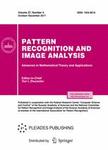版权所有:内蒙古大学图书馆 技术提供:维普资讯• 智图
内蒙古自治区呼和浩特市赛罕区大学西街235号 邮编: 010021

作者机构:Federal Research Center "Computer Science and Control" of Russian Academy of Sciences Moscow Russia Moscow Institute of Physics and Technology Dolgoprudny Russia National Research University of Electronic Technology Zelenograd Russia
出 版 物:《Pattern Recognition and Image Analysis》 (Pattern Recogn. Image Anal.)
年 卷 期:2018年第28卷第4期
页 面:670-675页
核心收录:
学科分类:0710[理学-生物学] 0831[工学-生物医学工程(可授工学、理学、医学学位)] 08[工学] 0835[工学-软件工程] 0714[理学-统计学(可授理学、经济学学位)] 0836[工学-生物工程] 0701[理学-数学] 0812[工学-计算机科学与技术(可授工学、理学学位)]
摘 要:The ability to provide reliable protection against counterfeiting is one of the key requirements for a biometric security system. Iris recognition as the technology emerging on mobile market is assumed to handle various types of spoof attacks to prevent compromise of the user’s personal data. A method of iris anti-spoofing is proposed in this work. It is based on applying of convolutional neural network and capable to work in real-time on the mobile device with highly limited computational resources. Classification of iris sample for spoof and live is made by a single frame using a pair of images: eye region and normalized iris. The following types of iris spoof samples are considered in this particular work: printed on paper, printed on paper with imposition of a contact lens, printed on paper with application of transparent glue. Testing of the method is performed on the dataset manually collected and containing all the mentioned spoof sample types. The method revealed its high performance in both classification accuracy and processing speed as well as robustness under uncontrollably changing environmental conditions, which are specific and significant when interacting with the mobile device. © 2018, Pleiades Publishing, Ltd.